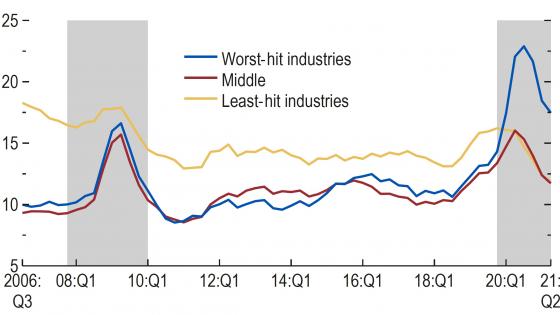For a while, the storm seemed to have passed and the Eurozone entered a welcome tranquil period. Now, Greece has once again triggered the alarm and, while the financial and economic resilience of many member countries has improved, their political resilience has not. Greece is special in many ways and will have to be dealt with in a different way from the other member countries, but the renewed turbulence it has caused once again has highlighted that the construction of the monetary union remains incomplete.
In the inaugural report in CEPR’s new Monitoring the Eurozone series (Corsetti et al. 2015), the authors1 call for a reconsideration of the Eurozone’s architecture. The report is available to download here.
Important institutional steps have certainly been taken, but the weight of crisis-fighting has fallen heavily on the ECB, which increasingly faces the danger of becoming overburdened – while being criticised simultaneously by those who think it is doing too much and those who wish for more.
While the ECB is not the only central bank in danger of being overburdened, the political and institutional structure of the Eurozone makes the problem more complex and potentially divisive. Meanwhile, reforms at the European level have come to a standstill and all debates on increasing fiscal and political integration have remained moot. Some countries have implemented significant fiscal consolidation and structural reforms, but others have lagged.
Slow growth and the debt overhang
Fundamentally, the Eurozone remains vulnerable because growth is anaemic. A key reason behind this is a debt overhang, which discourages investment and consumption growth. Several countries are currently caught in a low-activity equilibrium involving weak demand, high unemployment and rising nonperforming loans. With a high outstanding debt stock, a new shock – whether external or within the Eurozone – could easily set off a new crisis.
The Eurosystem remains vulnerable to fiscal shocks since there is no room left for fiscal manoeuvre in a number of countries. In addition, the diabolic loop between banks and sovereigns is alive and well. While the Single Supervisory Mechanism and the Single Resolution Mechanism are critical to reversing financial fragmentation, they are not sufficient, particularly in the near and medium terms. High borrowing costs of banks and – by extension – corporates and households in peripheral countries are still related to continued sovereign risk.
In this setting, attempts to implement necessary reforms of the fiscal governance in the Eurozone are stillborn. The existing rules did not prevent countries from issuing too much debt, nor providing liberally excessive lending, as both private agents and the governments correctly anticipated that the Treaty was too weak to make the no-bailout clause credible. Under a credible no-bailout clause, correct pricing of risk should have deterred excessive debt accumulation ex ante.
This did not happen. By now, all the potential beneficial effects of deterrence are long gone. In the present situation, with debt levels already very large and a still developing and untested institutional framework to protect countries from adverse spillovers, debt restructuring involving the private sector is not an attractive option. All that is left are the adverse ex post consequences of overly large stocks of private, but especially public, debt, including the vulnerability to runs. This is why, in the present circumstances, the difficult inheritance of the recent past is bound to frustrate and undermine fiscal governance reform capable of reining in moral hazard. Any hope of proceeding from here will necessarily require a change in the initial condition, to be brought about with a courageous and convincing Eurozone political initiative, to back a technically well-designed, sizeable reduction in existing debt levels.
Three proposals
The report, A New Start for the Eurozone: Dealing with Debt, focus on three issues because they are important and they can be addressed without a fully-fledged fiscal federation or changes to the Treaty:
- A one-time debt stock operation to rapidly reduce sovereign debt, particularly in the highly indebted peripheral countries. The authors offer a menu of options, one of which is a debt buyback through the commitment of future revenues, which could include seigniorage, VAT or a wealth (transfer) tax. This does not involve any redistribution across members of the currency union, but it would not be sufficient to eliminate the overhang. Therefore, they discuss a number of other choices, including a European solidarity tax with some limited redistribution across countries and ‘debt-equity’ exchange with GDP-indexed bonds.
- A strengthened sovereign lending framework for the ESM, which both creates strong market-based incentives to avoid excessive debt levels in the future and makes future debt restructuring – should it become necessary – less painful than is currently the case.
- A set of regulatory changes that discourage and limit the exposure of banks to sovereign debt, particularly that of their own sovereign. This should be complemented by the creation of a European synthetic bond that does not require mutualisation, but would constitute a safe asset and could facilitate unconventional monetary policies by the ECB.
Certainly, the goal is ambitious. The proposals aim to kill, with one stone, the three birds of enforcing long-run fiscal discipline, dealing with the legacy debt overhang and breaking the sovereign bank loop.
This would require a concerted effort and significant investment of political capital, which may only become available if the fragility of the present situation becomes apparent. However, the solutions to these three problems are strongly complementary and would generate large welfare improvements for Eurozone citizens if implemented jointly. Indeed, the authors stress that the package proposed should not be unbundled and nor should the implementation be partial.
References
Corsetti, G, L P Feld, P R Lane, L Reichlin, H Rey, D Vayanos and B Weder di Mauro (2015), A New Start for the Eurozone: Dealing with Debt, Monitoring the Eurozone 1, London: CEPR.
Endnotes
[1] The authors of the report form the European Council of Economic Experts, a new CEPR initiative created to provide a platform for the highest calibre analysis of economic developments in the Eurozone.







